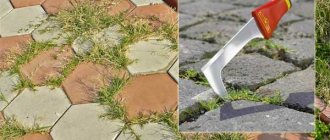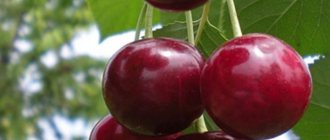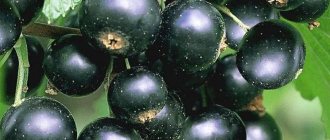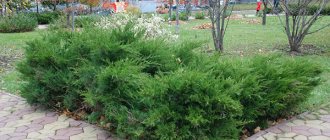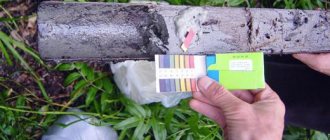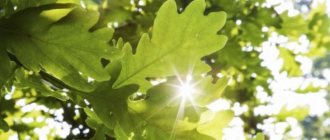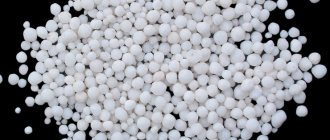Why do shoots appear and how to get rid of cherries?
Many gardeners are faced with the problem of root shoots. After all, this phenomenon is not uncommon for cherries. However, the first step to solving any problem is understanding its causes. So let's find out where shoots come from.
The most common cause of root shoots is improper planting. If you have not covered the roots well with soil and they are poking out to the surface, this will definitely lead to the appearance of shoots.
Also, one of the possible reasons is the incompatibility of the scion and rootstock. This can lead to very active shoot germination.
Also, a huge amount of thickets are formed by excessive pruning of branches.
Also, be sure to keep an eye on harvesting all of the cherry tree's harvest. Fallen fruits can give life to small shoots.
How to uproot a tree on your property
It should be said that there are several ways to uproot fruit trees on a site. Some gardeners simply cut down the cherry tree at the roots, leaving the root system in the ground, while others try to burn the roots with chemicals or dig them out of the ground as much as possible.
We’ll tell you in more detail about how to uproot cherries and then easily plant various fruit trees in the free space in the garden.
First of all, you need to decide how you will do this work. If you have the opportunity to order a tractor, you can lightly cut down the cherry tree, leaving the trunk at a height of a meter or one and a half.
Next, they carefully dig up the main roots, tie a strong cable to the tree, and use a tractor to force the tree and its roots out of the ground. This working technology allows you to remove most of the main roots of the cherry from the ground, and subsequently the remaining small roots do not pose any problem and quickly die.
If it is not possible to order such special equipment for this work, then you can either try to dig up all the main roots of the cherry yourself or use the old-fashioned method using the appropriate chemicals. The last method using chemicals is of great interest. We will describe how to remove cherries using chemicals.
The cherry tree is cut down at the root in the fall, leaving a stump about 30 centimeters high. Next, using a drill, make numerous holes in the cherry hemp with the maximum possible depth of 20-30 centimeters. You will need to make a solution based on saltpeter, for which about 100 grams of saltpeter are diluted in a liter of water. We will receive a concentrated solution, which is poured into numerous holes made in the hemp. Next, the holes are closed with corks or wooden plugs. Leave the cherry stump with chemicals until spring.
Saltpeter is highly active and will quickly burn the entire root system of the cherry. The gardener will only have to wait until spring, after which pour diesel fuel or any other flammable liquid into the existing holes in the stump and set the stump on fire. In an hour, the cherry wood will completely burn out, and the roots burned by saltpeter will not cause any problems and will soon simply rot in the ground.
Manually removing cherry roots yourself is somewhat difficult. In fact, you will have to dig up a tree-trunk circle with a radius of three meters, and you will have to dig to the same three-meter depth. This work will take several days.
Therefore, it is much easier to either use the appropriate special equipment and forcefully pull the buried cherry out of the ground, or use technology using saltpeter or any other active chemical. But it is not recommended to use salt for this work. The fact is that salts pollute the area, and subsequently have a bad effect on the growth of vegetables and fruits in the garden. Therefore, we would not recommend using harmful salt for these purposes.
What are the harm and benefits of overgrowth?
While cherry shoots may be a problem, they are quite easy to get rid of. However, before you do this, make sure you really want to remove them. After all, shoots are one of the best ways to propagate cherries. Even varietal trees can be propagated with their help, but for this the shoots will have to be grafted.
However, no matter how useful shoots are when expanding your cherry orchard, their uncontrolled growth will not lead to anything good. Every year there will be more and more small shoots.
They are weak, and therefore will become an excellent home for all types of pests, and their huge number allows them to take the lion's share of moisture and nutrients from the mother tree, despite the small size of individual shoots. Therefore, with a large number of shoots, a significant decrease in yield is observed.
What is its harm or benefit?
It is, of course, possible to remove cherry trees from the area. But it is not always necessary to completely remove all young shoots. The main benefit of shoots is the ability to reproduce cherries. But if the cherry is a varietal tree, then its shoots will not be varietal trees; they will have to be grafted.
Thickets of shoots can fill more and more territory every year if they are removed incorrectly or not removed at all. In addition, pests can form their homes in them. But the main harm to the shoots is the competition of young shoots with the mother tree for moisture and nutrients. There is a significant decrease in the yield of the mother tree.
Photo: © jardineriaon.com
Varieties that form basal shoots
There are several varieties of cherries that produce a huge amount of growth. Such varieties are Apukhtina and Shubinka cherries, as well as Vladimir and Krasnopaharskaya cherries.
Shoots of these varieties are best suited for propagation, since when transplanted, young trees retain all the varietal qualities of the mother tree. In the spring, these shoots can be cut off and prepared for transplantation into their new “home”, where they will serve you exclusively for your benefit.
However, there are varieties that do not have this advantage. From their shoots grow ordinary wild cherries, which are not interesting to most gardeners. And when such shoots appear, the question of their destruction arises. So how do you get rid of them?
Cherry varieties and ability to produce root shoots
There is no benefit from the shoots on grafted cherries, since they will all be wild. Own-root varieties produce healthy and good shoots, so they can be used to propagate cherries by root shoots.
To do this, a few of the strongest pieces (2-3, no more, so that the tree itself is not damaged) must be left, and next spring they must be dug up and transplanted to a permanent place or sent for sale.
These varieties include:
- Vladimirskaya,
- Shubinka,
- Apukhtipskaya,
- Krasnopakhapskaya.
Varietal trees Pamyat Enikeeva, Malinovka, Rastorguevskaya, Molodezhnaya, Voleka produce a lot of shoots, but they are completely unsuitable for propagation.
Of the old varieties, there is only one cherry that does not produce shoots at all: this is any variety grafted onto the seed rootstock of Shubinka or Vladimirskaya (nurseries warn about this).
Therefore, always check with the seller what rootstock the tree is grafted on!
The Izmailovskaya and AVCh-2 varieties produce the minimum number of root shoots.
The bushy varieties Lyubskaya, Bagryannaya, Shchedraya, Shokoladnitsa, Griot Ostgeimsky, and English early also do not produce shoots.
How to get rid of cherry growth: methods of disposal, their advantages and disadvantages
First of all, a gardener who notices the active growth of shoots in his garden wants to get rid of them immediately. There are several ways and each of them must be taken into account when solving this problem. Every experienced gardener should know them by heart.
The most effective methods are only three:
- regular cutting down of shoots;
- use of herbicides;
- complete digging of the site using machinery.
It is unlikely that anyone will like the latter method because of its enormous cost. After all, you will have to dig up the soil at least once a year. This is why many gardeners prefer to remove shoots with their own hands.
How to deal with cherry growth
Root growth is a big problem for gardeners. Because of this, the cherry tree literally “spreads” across the site, making it difficult to excavate in the immediate vicinity of the tree. In addition, growing shoots take away a significant amount of strength and nutrients from the mother plant, and this negatively affects its productivity.
Scheme of the formation of root shoots quickly spreading throughout the area
Root growth can be fought in various ways, but this fight is not always successful. Often, after a short period of time after removal, the number of young shoots not only does not become smaller, but also increases many times over. The reason for this will be improper removal of the shoots. The peculiarity of the cherry is its vitality; the tree perceives any mechanical impact as a threat to its life and takes retaliatory measures, releasing many young shoots. This must be taken into account and when removing root shoots, try not to injure either the roots or the above-ground part of the plant.
How to remove cherry growth from a plot using chemicals
In order to remove cherry root growth from the site, you can use herbicides - the same substances and compositions as for destroying weeds. Among these drugs, glyphosate-based formulations are the most widely used. These include Roundup, Tornado, Hurricane.
These drugs do not act selectively on vegetation. If you spray the root zone with herbicides, both the weeds and the young cherry shoots die.
Herbicides destroy not only cherry shoots, but also other plants
Many gardeners have a negative attitude towards the use of herbicides in the garden, rightly believing that the penetration of the active substance into the tissue of the tree can have negative consequences for it. In this case, there is only one way to remove cherry root growth - mechanically.
How to uproot cherry trees on your property with your own hands
If the cherry is old, dried out or affected by disease, then you need to get rid of it. Cutting down the ground part of the tree will not be difficult; this can be easily done with a hacksaw or chainsaw. Much more problems for the gardener are caused by cleaning the stump from the area. If it is not completely uprooted, the root growth will continue to bother the gardener even after the tree is removed. The branched root system will continue to intensively absorb nutrients from the soil, however, due to the absence of an above-ground part, the plant is forced to spend them on the formation of new shoots. The stumps must be uprooted, and, if possible, removing all remaining cherry roots from the ground.
The easiest way to uproot a stump is with an excavator or other heavy equipment.
The simplest way to uproot a cherry tree stump on your property is mechanical. In this case, it is simply torn out of the ground using powerful equipment, for example, an excavator. If access to the site for heavy vehicles is not possible, then you will have to work with hand tools. The stump is dug up from all sides, exposing the horizontal surface roots as far as possible. They are completely torn out of the ground, all the rest, going deeper, are cut with an ax. After this, the hole is covered with earth.
If time permits, a large stump can also be removed chemically. On the cut, it is necessary to drill as many deep holes as possible with a diameter of 8-12 mm, which are filled with table salt or ammonium nitrate¸ and then covered with wax or paraffin. In 1-1.5 years, the salts will completely destroy the structure of the tree and the stump will dry out. After this, you can uproot such a cherry without much effort. When using ammonium nitrate, the dried stump is set on fire. Wood impregnated with ammonium nitrate smolders perfectly, and in a short time the stump completely burns out along with the roots and shoots.
You can also destroy a stump using chemical methods.
A video on how to destroy the stump of a cherry tree or any other tree without uprooting or cutting it down can be viewed at the link:
How to remove cherry blossoms using folk remedies
The only folk remedies that are effective against cherry blossoms are a shovel and a hoe. If a tree regularly forms numerous root shoots, then it is better to remove such cherries from the garden forever and replace the variety with another. A good option to limit the spread of horizontal roots is to dig sheets of slate around the cherry tree trunk at a distance of 0.7-0.75 m. In this case, the shoots will grow only inside this trunk circle. Regular pruning at a height of 0.25-0.3 m gradually reduces the number of sprouts, but it may take years to completely “wean” the cherry from throwing out new root shoots.
Regular pruning of the growth gradually reduces its number
It has been noticed that any damage to the roots of the cherry tree provokes rapid growth of root shoots. Therefore, as a preventive measure, it is recommended not to carry out excavation work in the root zone of the tree. During the summer heat, it is advisable to cover the tree trunk circle with spruce branches or straw. This will avoid cracking of the soil, which can cause damage to the root system. It has been noticed that frequent watering also provokes the growth of root shoots. Therefore, cherries should be watered rarely, but abundantly.
Important! Cherries growing in the shade of a large building or tree produce much less root growth.
It is believed that the best way to remove cherry growth is to dig it up to the root and carefully trim it, then cover the cut with garden varnish. However, such a procedure is extremely labor-intensive. Therefore, many gardeners, trying to get rid of cherry bushes, simply mow down the young growth at ground level with a trimmer or lawn mower. This work should not be postponed until the end of the season; all shoots must be removed green before they become lignified. This will be more difficult to do later.
Mowing with a trimmer is a quick and effective way to get rid of root growth
When working with a trimmer when mowing the root zone, you must take precautions. Small debris, flying pieces of earth, pebbles and pieces of wood can seriously injure a tree trunk and damage the bark on it. To prevent this from happening, you need to put a plastic bottle cut lengthwise with the neck and bottom cut off onto the stem. If damage does occur, then the entire wound must be covered with garden varnish.
How to get rid of cherries. Manual removal
If it comes to removing the shoots yourself, then it is not so difficult. You will need the most common tools: pruning shears for destroying small, single shoots and an ax for mowing down thickets. However, you need to get rid of shoots when they are young and not strong enough. Here are some simple rules to follow:
- Cutting down shoots should be done either in early spring or late autumn. To remove a shoot completely, you will have to cut off the root where it extends from the shoot.
- It is recommended to treat the place where the root is cut with garden varnish.
- After this, it must be buried to prevent infection.
Pruning is one of the best ways to get rid of shoots, but it must be done very carefully. The roots of the mother tree must not be damaged under any circumstances. However, if you are too afraid of damaging the root, do not use this method, because without pruning, in just a year, at least three new shoots will appear in the place of the dug up shoot.
Is it possible to get rid of cherry bushes?
Many inexperienced gardeners wonder whether it is necessary to destroy all cherry shoots? You can just leave it alone and collect several times more fruit.
But, unfortunately, caring for such a tree will be more difficult. The great harm will be that all the nutrients will be spent on the growth of young branches, and the harvest will suffer. You should not place great hopes on the shoots, as they basically grow like wild bushes. Yes, and care will be much more difficult.
When planting, you should pay attention to the variety. It is advisable to choose tree-like and bush-like varieties. Because after 12-13 years, the young ones will show themselves at their worst.
How to get rid of cherries on your property using chemicals
Most often, gardeners are concerned not with individual small shoots, but with the huge thickets that form next to the mother tree. Not everyone can answer the question of how to get rid of them. But it is nevertheless quite simple. One has only to resort to special chemicals: herbicides.
They cope quite effectively with the destruction of thickets. However, there is no guarantee that it will not appear next year. However, the best drugs are used quite often. Here are some of them: Tornado, Alaz, Zero, Glisol.
Don’t forget that this is all chemicals, and therefore, in order not to harm yourself or other plants, you need to carefully read the instructions on the wrapper.
Destruction on stumps
Even cut cherries can be a problem for your garden, as shoots also form on the stumps. To prevent this, follow these instructions:
- Stumps must be uprooted in a timely manner. A stump on the site will be of no use to anyone other than extremely lazy gardeners.
- Also, the roots of stumps can be removed without uprooting. After all, this work is incredibly difficult. And if not everyone can handle it, then even a beginner can remove the root with the help of chemicals.
The easiest way is to kill the roots with substances such as urea, sodium nitrate or rock salt. You can also use the most common fertilizers to control roots. Surely every gardener has them.
It is enough to make holes in the desired stump and fill them with the substance. After this, fill it with water and cover the stump with film, which will protect it from the sun and rain. So the stump will be destined to stand for six months (when treated with any saltpeter) or even a year and a half (when treated with salt).
The most suitable time for treating stumps is late summer - early autumn. After the proper amount of time, the stump needs to be burned. It wouldn't be hard, considering he'd be dead inside. Additionally, nitrate is a chemical that will keep the tree burning until there are no more wood chips left.
Getting rid of root growth
The sooner the gardener begins to destroy the growth, the easier it will be to carry out this procedure. Mechanical action on the root system is used or chemicals from the group of herbicides are used.
See also
Characteristics and description of the Griot Moscow cherry variety, planting and care
Read
Mechanical method
This is the most common method of getting rid of overgrowth on a site. In this case, it is not enough to pull out the above-ground part of young plants with your hands or remove them with pruning shears: the root remains underground, which makes it possible for new shoots to appear.
To permanently destroy cherry shoots, you need to dig around it, cut off the rhizomes as close to the mother plant as possible and uproot them. After the procedure, you need to apply a garden varnish to the cut sites, which will protect the tree from infection.
Herbicide use
This method of getting rid of unwanted plants has both supporters and opponents. Spraying with chemicals must be carried out carefully in order to remove only young shoots from the site without affecting the mother tree. Only the shoots are sprayed purposefully, then there will be no harm to the adult tree.
Herbicides that get into the soil quickly disintegrate without having a negative impact on the environment. When the procedure is carried out correctly, unnecessary cherry shoots from the garden disappear forever.
Important! When using chemicals, safety precautions must be observed. Spraying is carried out in calm weather.
Destruction on stumps
As a rule, after cutting down a tree, growth begins to grow on the stump. Removing it does not solve the problem: it grows back again and again. The best way to get rid of shoots is to uproot the stump, but not all gardeners have the time and energy for this. There is a method to remove it without uprooting it. To do this, use urea, potassium or sodium nitrate.
Get rid of the stump as follows:
- cut down the resulting growth;
- 13-15 holes are made in the cherry stump;
- one of the fertilizers is poured into them and filled with water;
- The stump is covered with film for 6 months to prevent precipitation from entering it.
They begin to fight shoots on stumps in late August or early September. Six months later, the cherry stump is set on fire, and it immediately burns completely.
Installation of a "fence"
You can reduce the amount of overgrowth using any fence, for example, sheets of tiles that are not afraid of moisture, do not rot, and do not emit toxic substances. The sheets are buried 60-70 centimeters within a radius of 1.5-2 meters from the tree trunk. The earlier the fence is installed, the less likely it is for overgrowth to form. When they encounter a “fence,” the horizontal roots change their direction and begin to grow downward.
Caring for the tree after removing the shoots
Cherry is a rather unpretentious tree, but sensitive. Removing shoots is a real challenge for him. To help the tree survive, you must bury slate around the perimeter to a depth of one meter. The slate layer will become a kind of wall through which the shoots simply will not break through.
After this restriction, it will be very easy to monitor new shoots. It is enough just to remove them in a timely manner and care for the tree.
Experienced gardeners suggest watering cherry trees covered with shoots not too often, but abundantly.
What varieties produce shoots
Not all varieties produce shoots. All cherries can be divided into three large groups:
- rooted;
- cherries on clonal rootstocks;
- cherries on seed rootstocks.
Own-root varieties (Fairy, Vocation) produce abundant shoots. These cherries spread precisely by root layering. Cherries grown on clonal rootstocks produce shoots, but to a lesser extent, and cherries on seed rootstocks do not produce shoots. In addition, tree-like varieties produce more shoots than bush-like cherries, so gardeners often prefer just such individuals. The following varieties have the greatest tendency to form root shoots:
Such cherries require constant monitoring of the appearance of shoots and their timely removal. If this is not done, young shoots can fill the entire garden plot in the shortest possible time. The varieties “Shubinka” and “Vladimirka” are very popular among gardeners. These cherries are distinguished by their high yield, excellent quality of berries and the complete absence of root shoots. Also, root shoots do not appear in the following bush-like varieties:
One of the reasons for the appearance of abundant root shoots in cherries is the purchase of seedlings from hand. In this case, an absolutely unknown variety is purchased, and it is impossible to predict the result of its planting.
Many people like to feast on cherries straight from the tree, and spit out the seeds on the ground. This is a guarantee that the area will gradually be overgrown with cherries. For this reason, you should carefully collect all fallen berries, since wild bushes grow from the seeds. This material will tell you about grafting currants onto cherries.
Prevention measures
Reducing watering is not the only prevention method. It is also worth taking care of mulching the soil under the cherry tree. This will prevent the escape from breaking through to the surface.
Additionally, to prevent shoots from appearing on very young cherries, you should make sure that you plant them correctly. Not a single root sticks out from under the ground and the soil above them does not crack. Also, do not forget to remove fruits and seeds that have fallen from trees from the ground: they can give life to new shoots.
Preventive measures
As a preventative measure, it is necessary not only to reduce watering, but also to mulch the soil under the fruit trees. Mulch will prevent shoots from coming to the surface. To prevent the appearance of overgrowth, it is necessary to follow the planting rules. The roots of the seedling should be covered with soil. It is important to prevent cracking of the soil above the roots, since exposure to sunlight will provoke the growth of shoots from the roots.
When carrying out autumn work in the garden, it is necessary to remove fallen fruits and seeds.
Almost every gardener encounters shoots from fruit trees. It is important to learn how to properly care for plants and fight shoots, then the garden will delight you with its harvest for many years.

